Nestos-Rodopi area
Nestos-Rodopi area
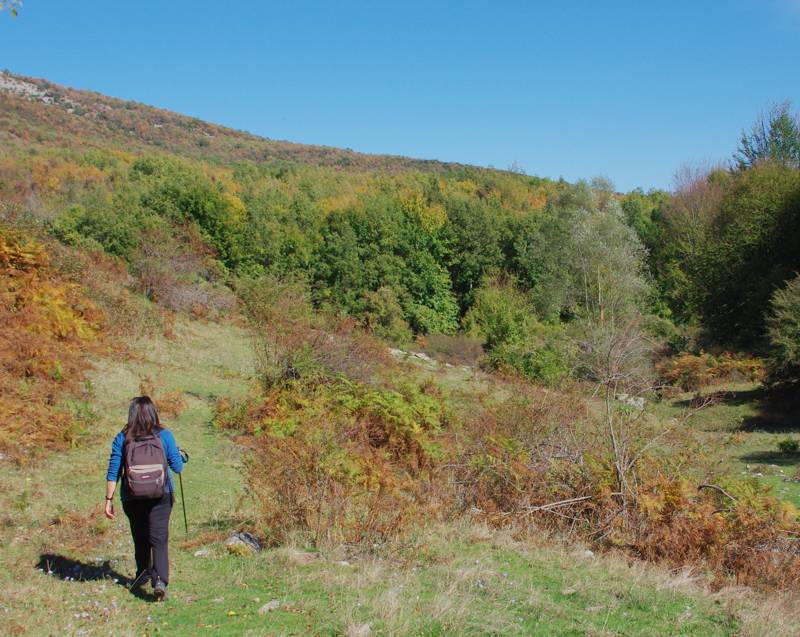
In the meadows of Rodopi
The area of Nestos and, the surrounding its basin, Rodopi mountain chain, are among the most interesting mountain areas of Greece in terms of natural landscapes and biodiversity.
The upper elevation zone is characterized by the dominance of beech forests. The middle zone exhibits a landscape and biotope mosaic, in which pastures dominate on the ridges and the upper part of the slopes and extended woods of broad-leaved trees lower and within the ravines. Nestos river determines the landscape all along its axis, forming a succession of pockets of riparian and Mediterranean vegetation, plain cultivated areas and extensive rocky sites and cliffs.
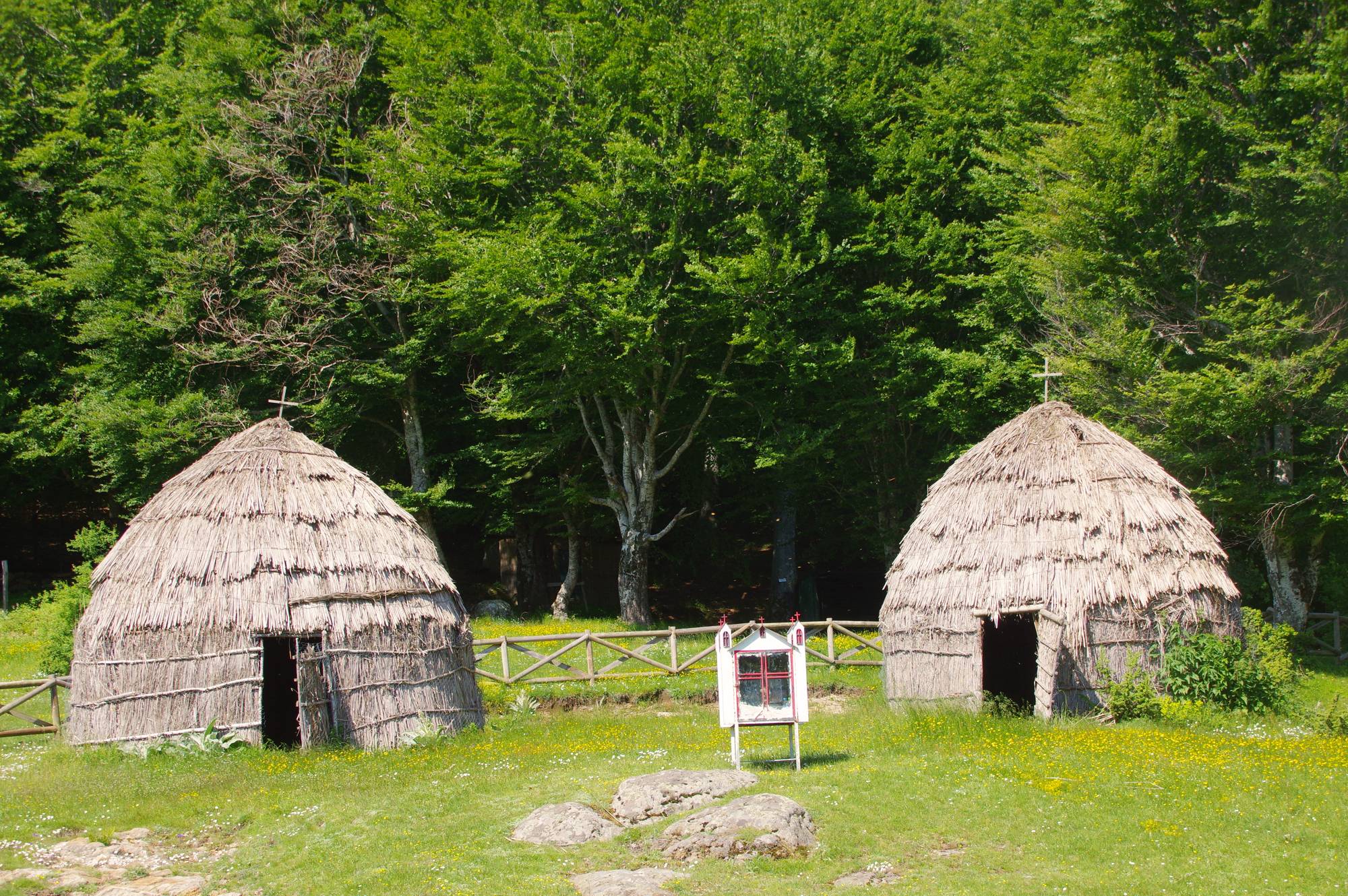
Until WW2, the meadows of Rodopi had been the preferred pastures of the Sarakatsans
The vegetation of Nestos-Rodopi area exhibits particular diversity. In the lower elevation zone, vegetation reflects the Mediterranean character of the climate, as it is covered by evergreen scrubland with the dominance of Kermes oak (Quercus coccifera). Extensive afforestation with Turkish pines (Pinus brutia) cover the hills surrounding the city of Xanthi, acting protectively but also offering lesiure options to the local population.
Moving towards the upper elevation zone, mixed forests with thermophilous deciduous species, with the prevalence of hop-hornbeam (Ostrya carpinifolia) and hornbeam (Carpinus betulus), cover the slopes, restricted though by grazing on the ridges and the plain areas. Stripes of hygrophilous trees, mainly poplars and willows, grow on the banks of the alluvial valleys near Stavroupoli.
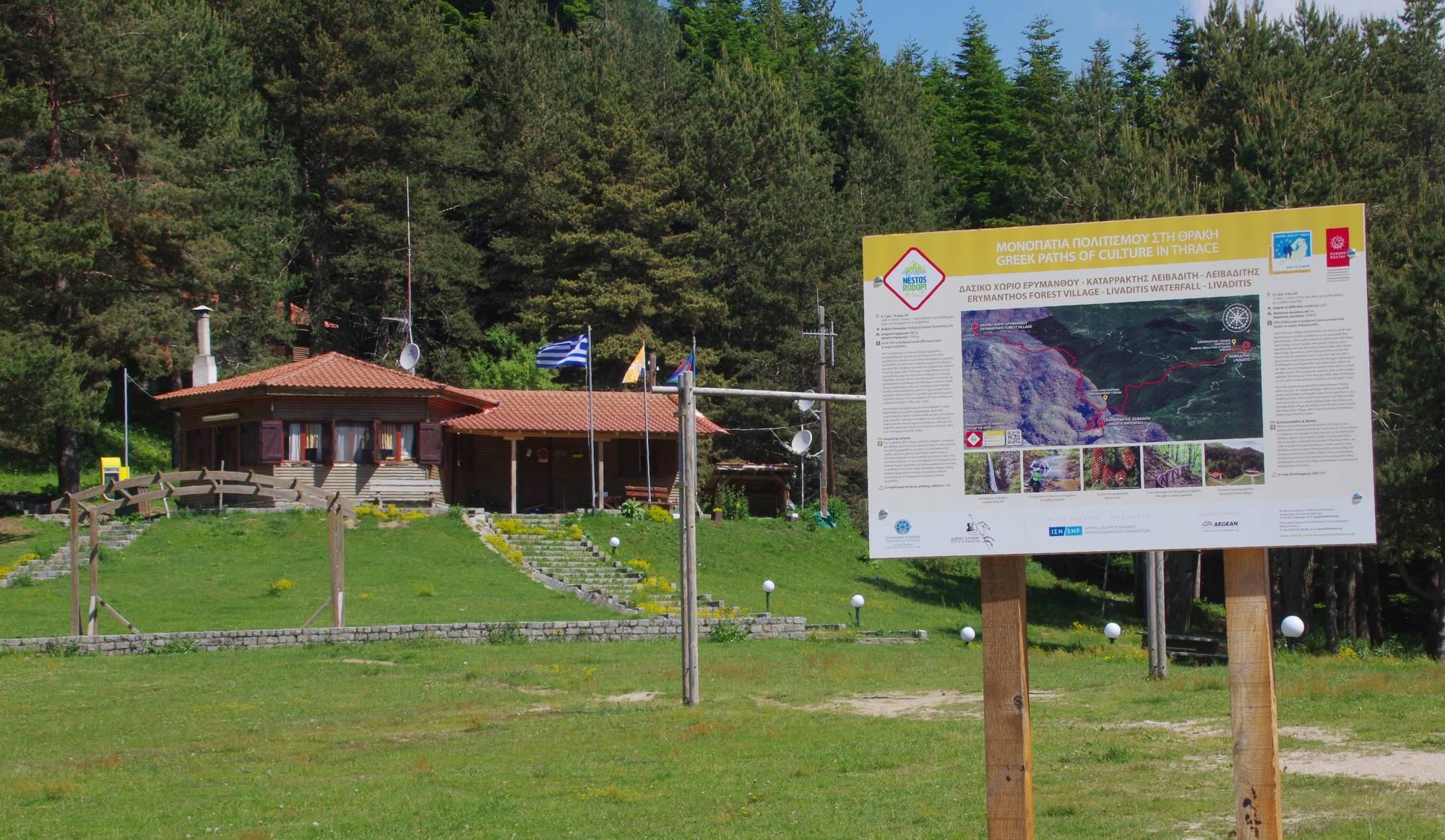
Erymanthos Forest Village (Chaidou)
On the hilly and semi-mountainous areas facing constant and intense effect of grazing, as around the villages of Livaditis and Karyofyto, forest vegetation has been replaced by open scrubland with the predominance of species resistant to grazing, such as the Jerusalem thorn (Paliurus spina christi).
Tall and dense beech forests (Fagus sylvatica), with good development and structure, grow in the upper elevation zone. In the clearings and margins of this zone grow also some pionner photophilous wood species, such as the silver birch (Betula pendula), the common aspen (Populus tremula), but also the Scots pines (Pinus sylvestris).
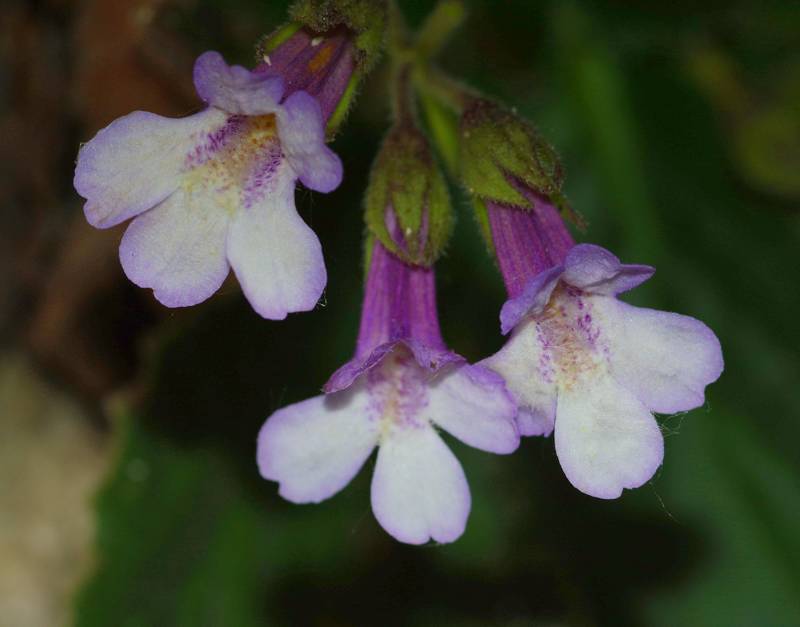 <
<Haberlea rhodopensis
The flora of the area includes several intriguing features. A reason for that is its geographic position, on the crossroads of different biogeographical regions, allowing it to be influenced by the Mediterranean, the Anatolian and the North-European floristic regions. Moreover, during the geological histroy, parts of Rodopi area were not covered by ice during the last glacial period and constituted a refuge for several plant species, which moved their geographical distribution southerly.
The area of Rodopi hosts also several plant species being either Balkan endemics or mainly distributed in more northern regions and meet here the southernmost side of their geographic distribution. A distinctive example of this second category is the conifer Norway spruce (Picea abies).
Nestos valley is also a particularly interesting floristic area. On one hand, functioning as a refuge during the last glacial period, it hosts residual species such as Haberlea rhodopensis. Furthermore, it hosts species meeting here the northernmost point of their distribution, such as the Attica autumn crocus Colchicum atticum, a Greek endemic species typically occuring in Mediterranean biotopes.
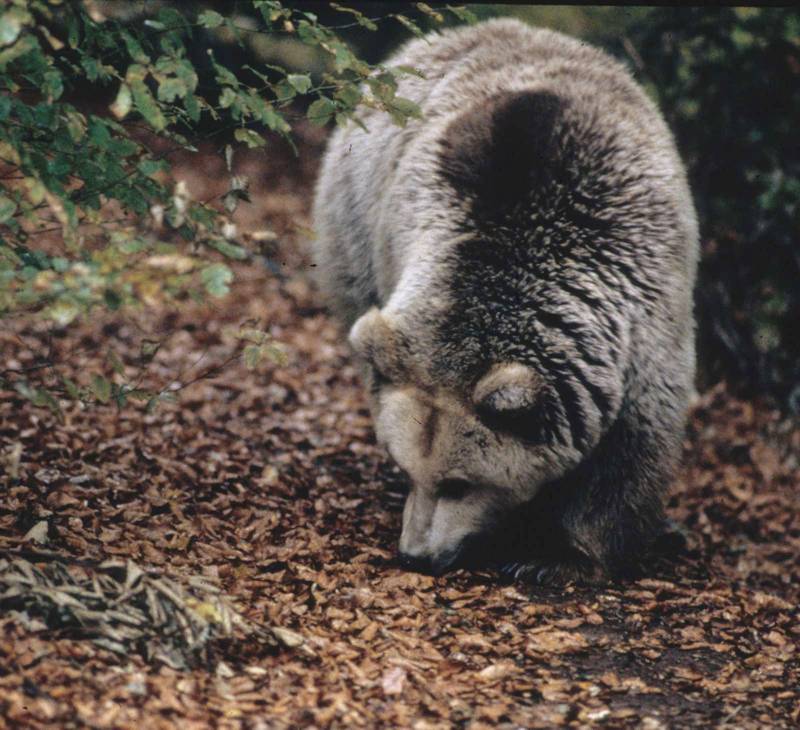
Nestos-Rodopi area: Brown Bear (Ursus arctos)
A series of features found in Nestos-Rodopi area result in the appearance of a diverse fauna. Particularly the northern, wooded part, exhibiting low intension human activity, extended forest biotopes, as well as continuity with a particularly large zone, as the Rodopi mountain chain, extending also to the adjacent Bulgaria, has actually the richest fauna of mammals in the Greek territory. Iconic large mammals such as the Brown Bear (Ursus arctos), the Gray Wolf (Canis lupus), the Golden Jackal (Canis aureus), the Red Deer (Cervus elaphus), the Roe Deer (Capreolus capreolus) and the Wild Boar (Sus scrofa) occur here. Moreover, other mammals occurring here are the brown hare (Lepus europaeus), the badger (Meles meles), the Pine marten (Martes martes), the European mole (Talpa europaea), the Eurasian otter (Lutra lutra), the Wildcat (Felis sylvestris) and the Weasel (Mustela nivalis).
The avifauna exhibits respectively particular species richness. Characteristic species of the area are the Golden Eagle (Aquila chrysaetos), the White-tailed Eagle (Haliaaetus albicilla), as well as the carcass-fed Griffon Vultures (Gyps fulvus). Similar diversity appears also among reptiles, amphibians, but also invertebrates.
A hiking guide of topoguide app series, dedicated to Nestos-Rodopi area, is under development. However, all trails of the area are already included in the hiking application topoguide Greece, available for both Android and iOS (iPhone και iPad) devices.
topoguide Greece provides full coverage of Greece with hiking off-line maps and thousands of POIS and offers tracking and navigation services.

